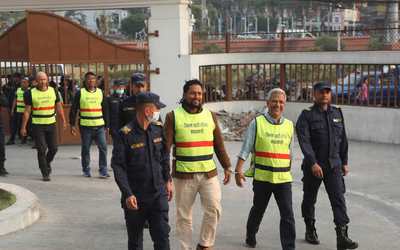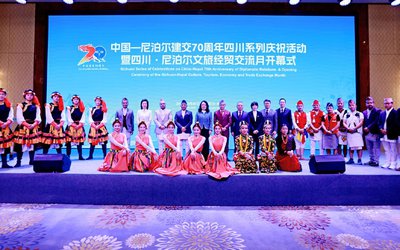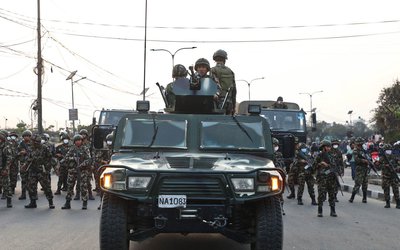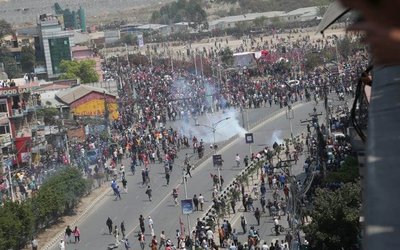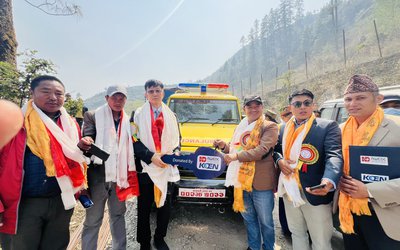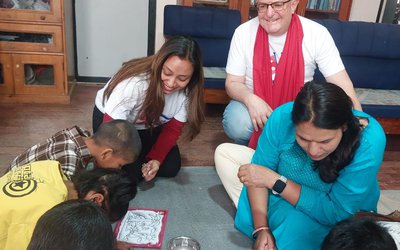
Nepal has made great strides in expanding access to pre-primary education with enrolment rate having increased from 12 per cent in 2000 to 86 per cent in 2017, UNICEF praised in a new global report released today.
According to UNICEF, a lot achieved and more need to be done for pre-primary education in Nepal.
A World Ready to Learn: Prioritizing Quality Early Childhood Education – UNICEF’s first ever global report on pre-primary education – reports that this is one of the fastest improvements in the access to pre-primary education in the last two decades globally and quotes Nepal among the “high performers” in the world in this regard.
The country has incorporated one year of pre-primary education into law and formally recognized it as part of Nepal’s free and compulsory basic education in the 8th Amendment to the Education Act promulgated in 2016. The number of early childhood development centres has increased by 35 times in 12 years from 1,038 in 2003 to 35,991 in 2015.
According to a press release issued by UNICEF, there is a rich body of scientific evidence which show that children enrolled in at least one year of pre-primary education are more likely to develop the critical skills they need to succeed in schools, performing better, less likely to repeat grades or drop out of school. The impact of exposure to pre-primary education is also life-long. Those children who experienced quality pre-primary education tend to lead healthier life, more likely to be employed, economically better off and less prone to early pregnancy and delivery and social problems such as drug and alcohol addiction and involvement in crimes.
In Nepal, too, children who are in pre-primary education are much more likely to be developmentally on track in foundational early literacy and numeracy skills than children missing out on that opportunity. According to a nation-wide survey conducted in 2014, children aged 3 to 5 years attending early childhood education programmes in Nepal were 17 times more likely to be on track in their foundational early literacy and numeracy skills even after excluding the effects of numerous socio-economic factors.
However, the rapid expansion of early childhood education programs has not always been accompanied by quality in many countries including Nepal. Nepal’s national education budget allocates less than 3 per cent to pre-primary education, which is not enough to ensure quality early childhood care and education services including development of a national minimum standards, construction of necessary physical infrastructure and improvement of the capacity of human resources engaged in early childhood development services. Nepal spends US$ 14 per pre-primary-age child annually compared with US$ 26 for Tanzania, US$ 25 for Zimbabwe and US$ 24 for Tajikistan from the government’s budget. As a result, household expenditures to pre-primary education account for a larger proportion of total national pre-primary expenditure than the government expenditures. The share of out-of-pocket expenses for households compared with the total expenditure is 63 per cent in the case of pre-primary education compared with 36 per cent in the case of primary education in Nepal.
In the report, UNICEF urges all the governments in the world to commit at least 10 per cent of their national education budgets to achieve the Sustainable Development Goal (SDG) 4.2, i.e. “By 2030, ensure that all girls and boys have access to quality early childhood development, care and pre-primary education so that they are ready for primary education.”
“According to the latest study by a winner of the Nobel Prize for Economics James Heckman, a society can get 13.7 per cent return from the investment it makes in early childhood development programmes. This is much higher than the annual return on equities in the U.S. stock market for the entire post-Second World War period. It is a huge return on investment and competes favourably with any best-performing public and private investments”, says UNICEF Representative to Nepal, Tomoo Hozumi. “Nepal has made great progress in expanding early childhood education to an increasing number of children. At the same time, it can do more by substantially improving its quality for all children regardless of their socio-economic backgrounds. We must make sure that no child is left behind so that we can walk the talk on ‘leaving no one behind’ principle of the SDGs.”
Key findings of the report
Role of poverty: Across 64 countries with available data, the poorest children are seven times less likely than children from the wealthiest families to attend early childhood education programmes. In the case of Nepal, too, children aged 3 to 5 years from the poorest 20 per cent households were half as likely to attend pre-primary education compared with children from the richest 20 per cent households in 2014 with 41 per cent and 83 per cent, respectively. Also only 12 per cent of children aged 3 to 5 years from the poorest 20 per cent were developmentally on track in foundational early literacy and numeracy skills compared with 65 per cent of children from the richest 20 per cent in 2014.
Impact of conflicts and disasters: More than two thirds of pre-primary-age children living in 33 countries affected by conflict or disaster are not enrolled in early childhood education programmes. Yet, these are the children for whom pre-primary education has some of the greatest benefits. Pre-primary education helps young children affected by crises overcome the traumas they have experienced by giving them a structure, a safe place to learn and play, and an outlet to express their emotions. This is highly important for Nepal, too, as it is one of the most disaster-prone countries in the world.
Cycle of educational achievement: Across countries with available data, children born to mothers who have completed secondary education and above are nearly five times more likely to attend an early childhood education program than children whose mothers have completed only primary education or have no formal education. From this, it is clear that virtuous cycle of developments start from education of children including girls.
- Upper Trishuli-1 Hydropower Project Handed Over Ambulances
- Mar 31, 2025
- Embassy of Israel Celebrates Good Deeds Day with Children and Elderly at Tulasi Foundation
- Mar 31, 2025
- Tribhuvan International Airport to open for 18 hours daily from Tuesday ( April 1)
- Mar 31, 2025
- Eid-ul-Fitr live updates: PM Modi extends Eid greetings, wishes joy and success
- Mar 31, 2025
- Chaitra Navratri 2025: Importance Significant
- Mar 31, 2025
